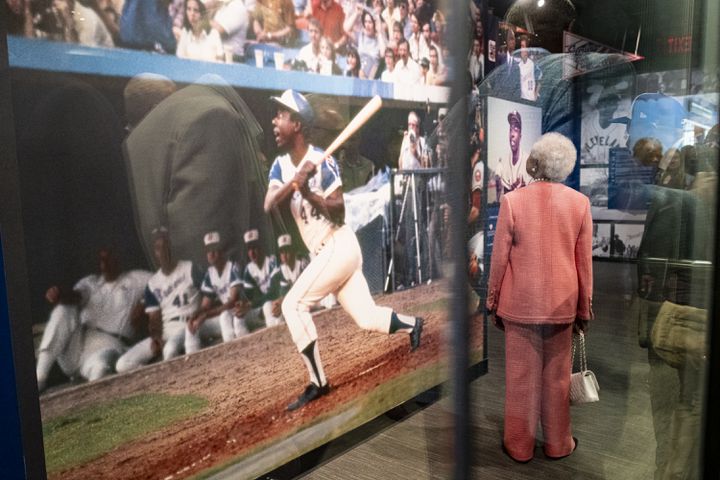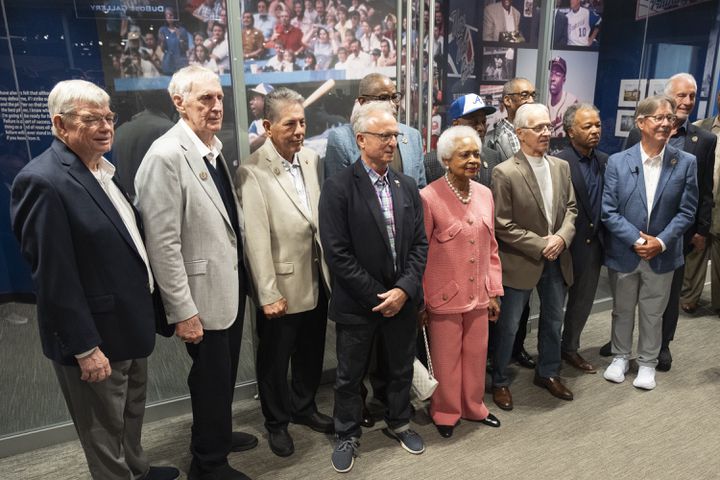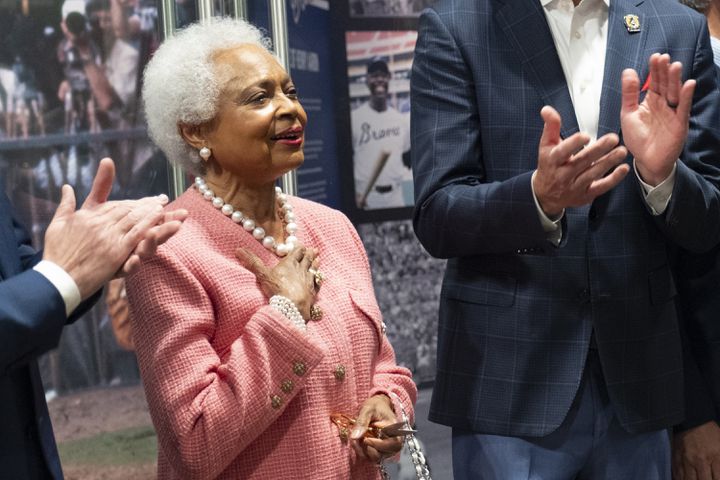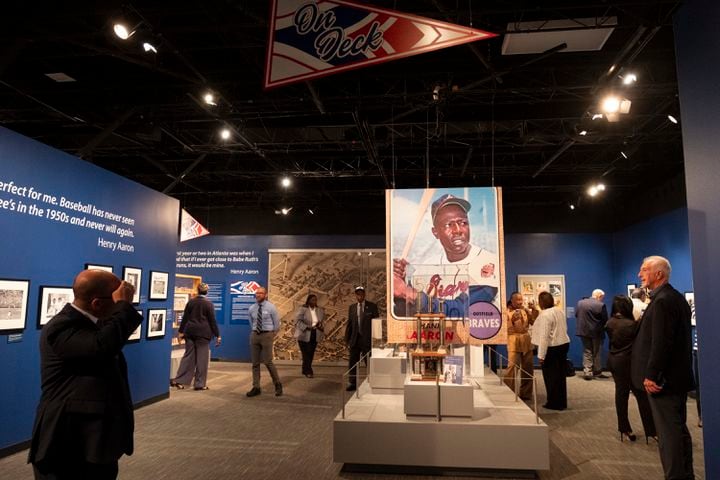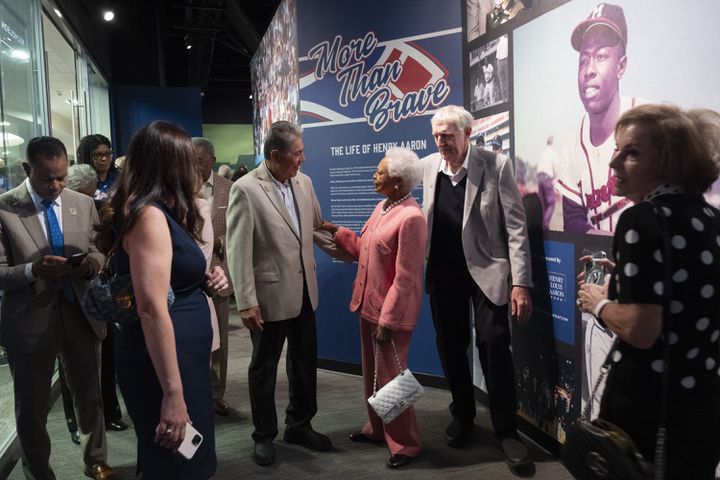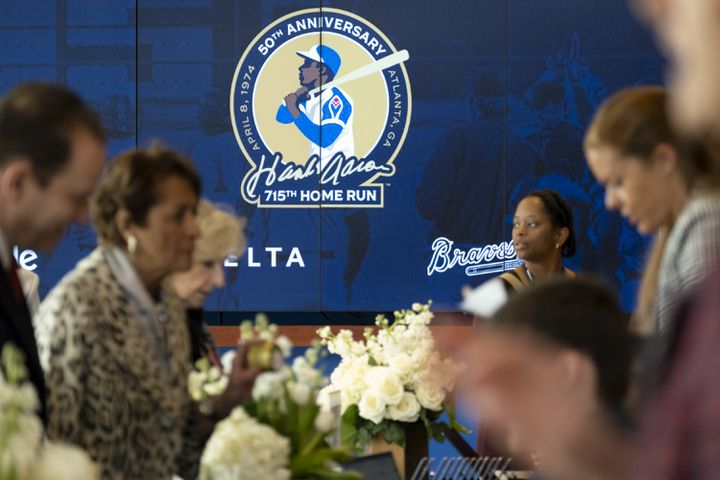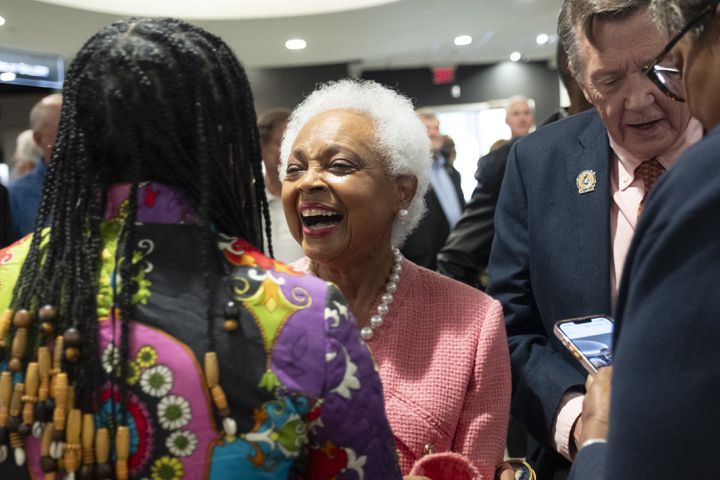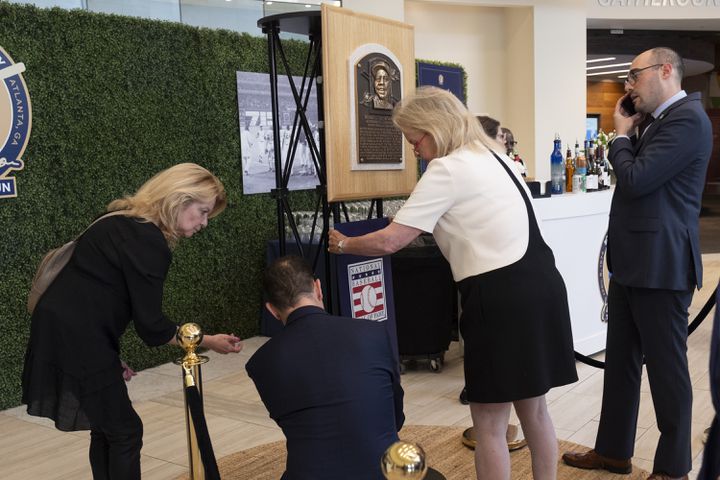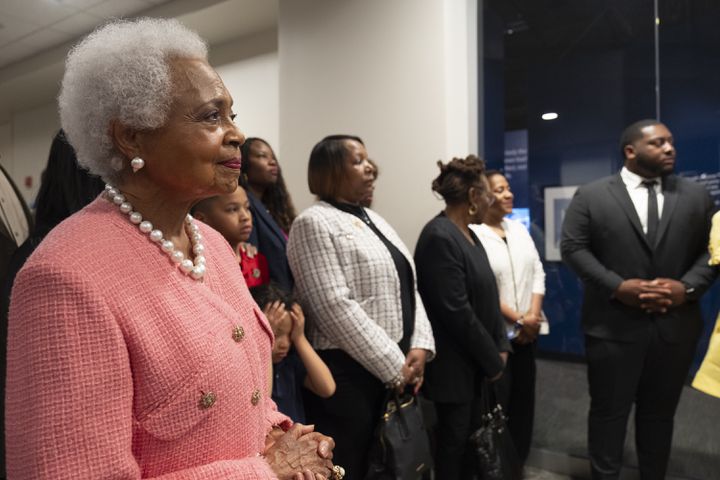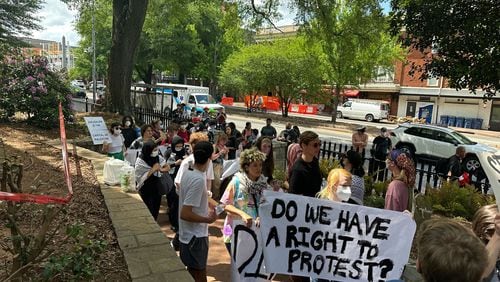The Atlanta History Center chose to unveil its Henry “Hank” Aaron exhibit on the 50th anniversary of the the Braves legend breaking Babe Ruth’s home run record. But it doesn’t take long to realize that the display is about a lot more than just April 8, 1974. Its ambition is spelled out to visitors on the first wall they see as they enter the room: “More Than Brave: The Life of Henry Aaron.”
The goal, according to Timothy Frilingos, the center’s director of exhibitions: “Creating a storyline, gathering objects and images, to really tell the whole life of Henry Aaron beyond that moment and beyond just the story of the home run record,”
I’d say the Center succeeded. Aaron’s life obviously can’t be summed up by an exhibit in one room of one history center. His legend is too big to fit. But “More Than Brave” makes great use of its collected materials, interspersed with Aaron’s words, to create a vivid and moving snapshot of Aaron’s life and impact as a baseball player.
The exhibit is a big deal. That was confirmed by the list of luminaries who came to the History Center in Buckhead for the ribbon cutting. Billye Aaron, Hank’s widow, did the honors. Among the other special guests were Ambassador and former mayor of Atlanta, Andrew Young. Aaron’s teammate from the 1974 season in attendance included Dusty Baker, Ralph Garr and Tom House.
To create the display, the History Center borrowed artifacts from the National Baseball Hall of Fame, community members and collectors of memorabilia . The exhibit especially benefits from personal items provided by Billye Aaron. Among them are photographs of Aaron at the White House with presidents Barack Obama, Bill Clinton, George W. Bush and Gerald Ford.
Relics from the night that Aaron hit his 715th homer at Atlanta-Fulton County Stadium take up maybe 20% of the exhibition space. The rest is used to chronicle Aaron’s life before baseball, his career as a professional ballplayer and his continued impact after his retirement. No matter how much you know about Aaron, who died in 2021, the chances are high that you’ll learn something new from the exhibit.
For me, that was discovering more about the Black baseball legends of Mobile. I knew that Aaron, Willie McCovey and Satchel Paige are from that city. I didn’t know they were born blocks apart from one another in the neighborhood known as “Down the Bay” until I saw this fact displayed on a map at the exhibit.
That part of the exhibit includes words by Aaron on that topic from his 1991 autobiography “I Had A Hammer: The Hank Aaron Story”:
“Mobile was one of the few places in the Deep South—maybe the only place—where baseball wasn’t completely overshadowed by football. There’s no telling how many major leaguers Mobile might have produced if blacks hadn’t been kept out of baseball.”
From that quote you can see that “More Than Brave” doesn’t treat race like an elephant in the room. It’s a central part of it, as must be the case for any honest portrayal of Aaron’s life. The exhibit tells the story of Aaron growing up in Alabama during the period of racial apartheid known as Jim Crow. It doesn’t whitewash the racism that Aaron faced when he broke into racially-integrated professional baseball and during his chase of Ruth’s record.
“More than Brave” chronicles how Aaron decided he was inspired to dream about the big leagues when Jackie Robinson visited Mobile the year after he became the first Black player of MLB’s modern era. The exhibit shows how Aaron later became a (willing) icon of the Civil Rights Movement. One great piece of history provided by Billye Aaron is a signed print of Aaron with other Atlanta leaders wearing their Presidential Medals of Freedom: C.T. Vivian, John Lewis, Joseph Lowery and Andrew Young.
Aaron expressed apprehension about returning to the South to play baseball when Braves ownership was considering moving the franchise from Milwaukee to Atlanta. The exhibit’s artifacts include a 1964 letter from a Black state senator, Leroy Johnson. He told Aaron that he understood his fears but reassured him that Georgia “has made more progress in the last five years in the area of human relations than any other southern state.”
Aaron would later say he changed his mind about Atlanta when he found “suitable” neighborhoods for his family though, he noted, they were racially segregated. There’s a photo in the exhibit depicting the mutual appreciation of Atlanta fans and Aaron. He’s waiving to fans at Atlanta-Fulton County Stadium as he takes the field for the final day of the 1973 season.
But during that time that Aaron also received hate mail and death threats from white people. They were angry because he was closing in on the most prestigious record in the game known as America’s Pastime. Young, speaking during a panel event at the History Center, said Aaron’s upbringing in Mobile prepared him for that experience.
Young relayed a story that he said Aaron once told him about his youth. Young said Aaron and his friends were playing baseball when his mother suddenly told them to come inside and get under the bed. The kids didn’t know what was going on, Aaron told Young.
“Then comes the Ku Klux Klan riding by on horseback,” Young said. “She’s sitting on the porch, rocking. And then when the went by, she said, ‘All right, come on out, go out and finish your game.’
“I say that because he was always cool from day one. And none of the hysterics of breaking Babe Ruth’s record ever changed him. He was always humble, always determined.”
That might have made a good name for the Aaron exhibit at the Atlanta History Center. But “More than Brave: The Life of Henry Aaron” also works. The 50th anniversary of Aaron’s greatest baseball achievement was the occasion for the exhibit’s unveiling but, as the title promises, it’s about a lot more than April 8, 1974.
“More Than Brave” will open to the public on April 9. It is scheduled to be on display through September 2025.
Credit: Ben Gray
Credit: Ben Gray
Credit: Ben Gray for the AJC
Credit: Ben Gray for the AJC
Credit: Ben Gray
Credit: Ben Gray
